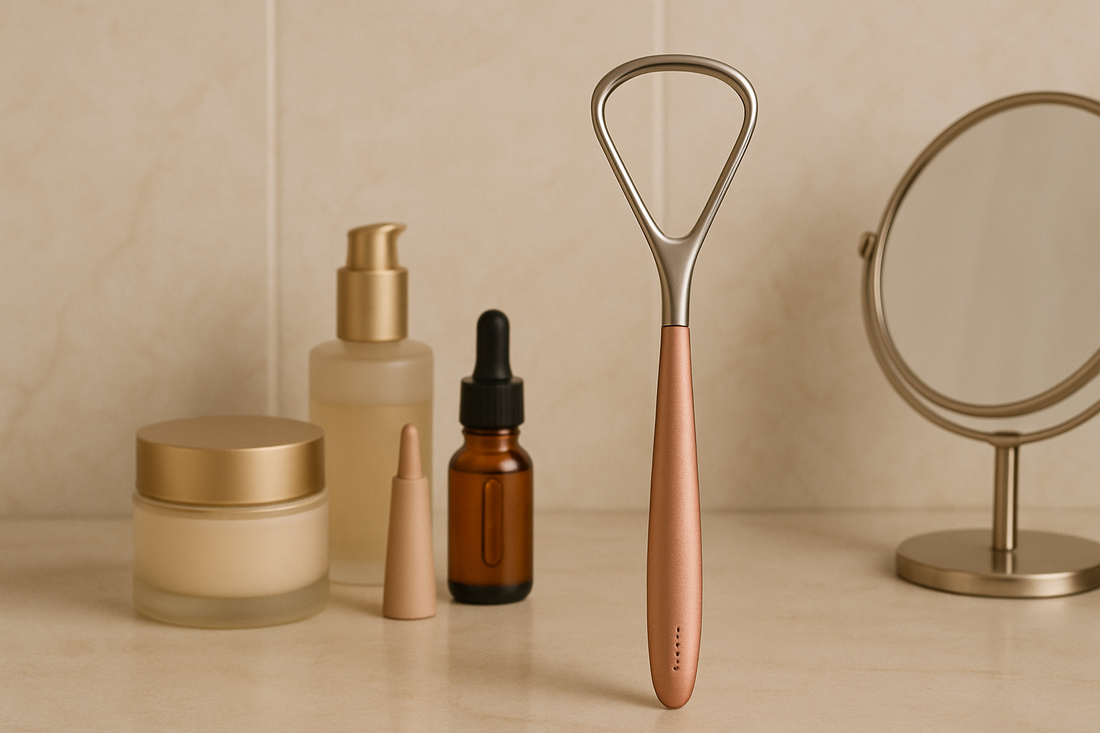
Tongue Scraping: Is it safe or just trendy?

Tongue scraping is blowing up online, especially on TikTok. But how effective (or safe) is it really? This guide breaks down the science, the risks, and smarter alternatives backed by dental pros.
What is Tongue Scraping?
Tongue scraping is the practice of using a U-shaped metal or plastic tool to physically remove debris, bacteria, and dead cells from the surface of your tongue. It’s been around for centuries (especially in Ayurvedic medicine), but has now resurfaced as a viral ritual.
The claimed benefits: Fact or Hype?
- Fresher Breath: TRUE. Tongue scraping helps in reducing volatile sulfur compounds (VSCs) that are primarily responsible for bad breath.
- Bacterial Removal: PARTLY TRUE. It removes surface-level bacteria and debris but it doesn't replace brushing or flossing. Therefore, it can reduce bacterial load temporarily but doesn't address plaque or buildup.
- What dentists say: Gentle tongue cleaning is safe, if done right. Brushing with a soft-bristled brush may be safer for sensitive individuals.
How to Add Tongue Cleaning to Your Routine
1. Use scraper before brushing your teeth.
2. Lightly glide from back to front, don’t press hard.
3. Rinse scraper thoroughly after each use.
4. Follow up with brushing, flossing, and mouthwash.
5. Replace scraper every few months (or switch to brushes with built-in scrapers).

For those looking to refine their oral care ritual, a tongue scraper is an understated essential. Grin offers a sleek, minimalist version designed with both form and function in mind.

